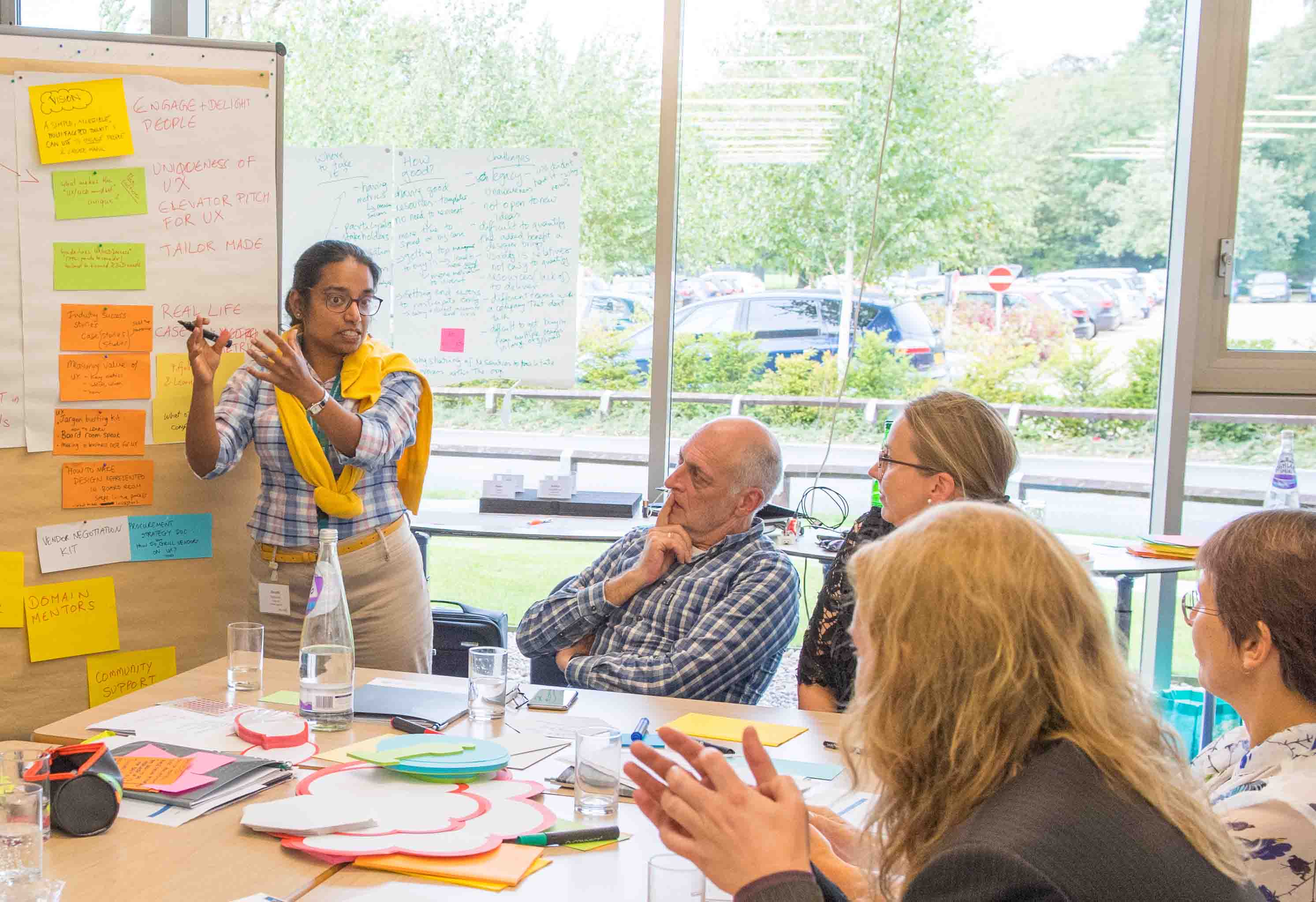
UX toolkit aids industry R&D
User Experience designers rarely specialise in the life sciences – EMBL-EBI and the Pistoia Alliance look to fill the gap

Have you ever tugged at a closed door only to watch someone else push it open effortlessly moments later? The subtle cues that tell you whether to push or pull on a door are a bit like the design features employed by user experience (UX) professionals to guide users working with software.
In fact, the purpose of UX design is to increase the efficiency of software and to make it a pleasure to use. Avoiding those awkward door-tugging moments for scientists using a new piece of software means they can get on with their research.
However, UX design isn’t widely adopted in the development of software for life scientists. There are two main reasons for this. The first is a shortage of professionals with expertise in both UX design and life-science research. The second is a lack of awareness at decision-making levels of the need to incorporate UX in the development of software and services.
Pistoia Alliance workshop
So, to address these two needs, the Pistoia Alliance, including EMBL-EBI and its Industry Programme, created a community of interest for UX experts working in life sciences and launched a project to produce a bespoke UX toolkit for them.
The first step of the programme was a two-day workshop hosted by EMBL-EBI. The event comprised delegates from 24 organisations, including pharmaceutical companies, universities, non-profit institutes, agri-food and technology product and service companies.
UX toolkit
By the end of the event, the organisers and attendees had narrowed the first version of the toolkit requirements down to four crucial components.
The UX toolkit will contain:
- Case studies that demonstrate the value of UX in the life sciences
- UX methods/templates
- Metrics that show how the impact of UX can be measured
- Approaches to achieve greater awareness and buy-in from end users and decision makers
There are two main benefits of creating and disseminating the UX toolkit. The first is stimulating cultural change in research organisations where UX design is currently undervalued and under-resourced. The second is providing support for UX practitioners and software developers who need to understand how research scientists work, in order to create a better experience for the end user.
The workshop sparked much excitement as people with common interests met to grapple with shared challenges for the first time.
“It’s exciting to get to know so many UX professionals and practitioners from many different pharma companies and vendors,” says Pat Keller, Global Head of User Experience at NIBR Informatics. “Face-to-face meetings mean we can work together to create a better place for UX in life science. Everybody is passionate, everybody wants to improve the industry, and that’s what gives this group momentum, inspiration, and motivation to achieve its goals.”
Face-to-face meetings mean we can work together to create a better place for UX in life science
Taking it forward
A successful workshop gives participants a sense of clarity and accomplishment, and its impact goes beyond the exercise itself. The results and outcomes of this particular workshop informed a funding proposal for the next phase of the pre-competitive Pistoia Alliance project to develop tools to empower UX practitioners to deliver effective design that makes a positive difference in life science.
“We hope to use the findings of the first workshop as a basis for our project work and the next face-to-face UX event with the Pistoia Alliance,” explains Dr. Jenny Cham, Lead User Experience Architect at EMBL-EBI. “The goal of these events is to grow the UX community in life sciences and create a shared experience.”
EMBL-EBI has been developing tools and databases for researchers around the world for decades. It places great value on making its tools intuitive and easy to use, through user feedback and continuous improvement. The Pistoia Alliance wants to share expertise and encourage a healthy UX culture in the life sciences.
The next Pistoia Alliance UX workshop will take place on 28–29 June 2017. To find out more, go to the Pistoia Alliance website.
UX Opportunities at the EBI
The EMBL-EBI Web Development team is currently looking for an enthusiastic and talented UX Designer. Find out more about the role here.
About the Pistoia Alliance
The Pistoia Alliance is a global, not-for-profit alliance of life science companies, including the biopharmaceutical industry, technology product and supply companies, publishers and academic groups that work together to lower the barriers to innovation in life science R&D. It aims to transform R&D innovation through pre-competitive collaboration. To find out more, go to the Pistoia Alliance website.
This post was originally published on EMBL-EBI News.


